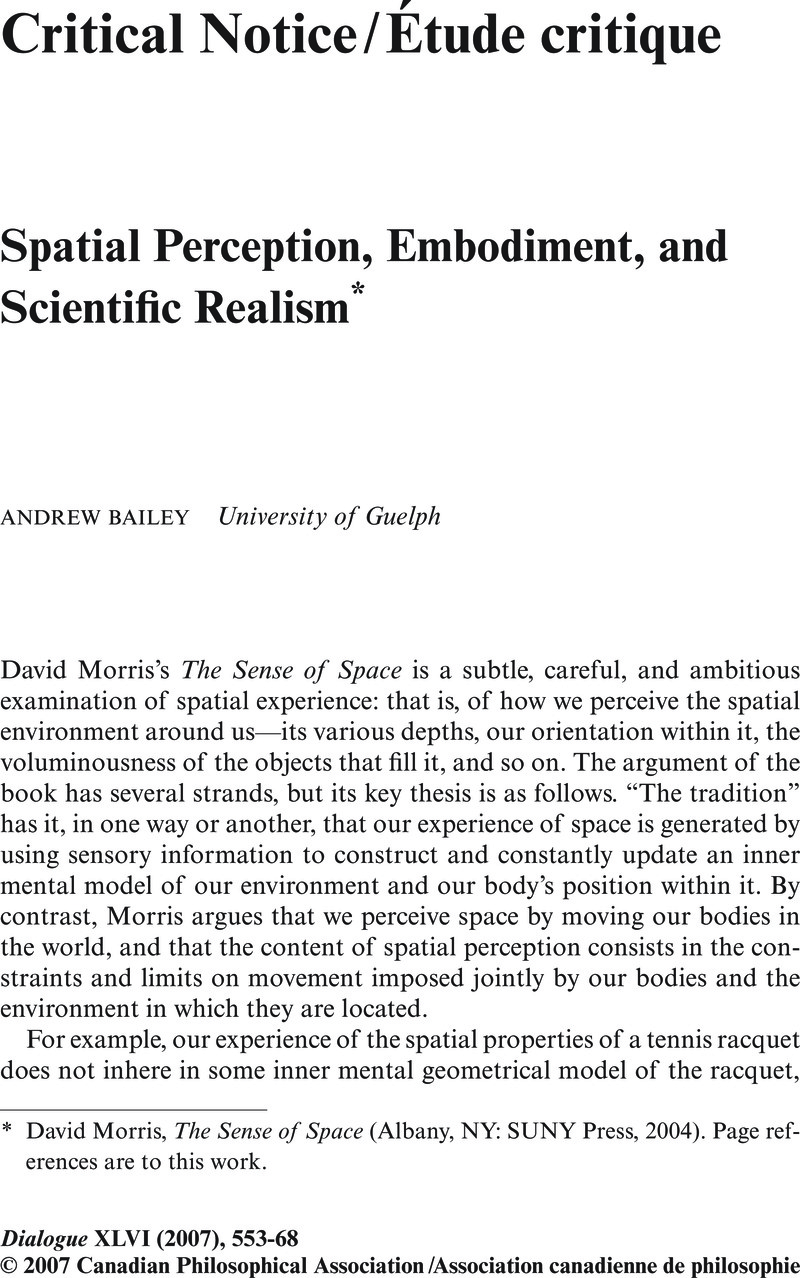No CrossRef data available.
Article contents
Spatial Perception, Embodiment, and Scientific Realism*
Published online by Cambridge University Press: 27 April 2009
Abstract
An abstract is not available for this content so a preview has been provided. Please use the Get access link above for information on how to access this content.

- Type
- Critical Notice/Étude critique
- Information
- Dialogue: Canadian Philosophical Review / Revue canadienne de philosophie , Volume 46 , Issue 3 , Summer 2007 , pp. 553 - 568
- Copyright
- Copyright © Canadian Philosophical Association 2007
References
Brooks, R. 1991 “Intelligence without Representation.” Artificial Intelligence, 47: 139–59.CrossRefGoogle Scholar
Churchland, P. S., Ramachandran, V. S., and Sejnowski, T. J. 1994 “A Critique of Pure Vision.” In Large-Scale Neuronal Theories of the Brain: Computational Neuroscience. Edited by Koch, Christof and Davis, Joel L.. Cambridge, MA: MIT Press, pp. 23–60.Google Scholar
Clark, A. 1997 Being There: Putting Brain, Body, and World Together Again. Cambridge: MIT Press.Google Scholar
Gibson, J. J. 1966 The Senses Considered as Perceptual Systems. Boston: Houghton Mifflin.Google Scholar
Merleau-Ponty, M. 1962 Phenomenology of Perception. Translated by Smith, Colin. London: Routledge.Google Scholar
Thelen, E., and Fisher, D. 1982 “Newborn Stepping: An Explanation for a ‘Disappearing’ Reflex.” Developmental Psychology, 18: 760–75.CrossRefGoogle Scholar
Varela, F., Thompson, E., and Rosch, E. 1991 The Embodied Mind: Cognitive Science and Human Experience. Cambridge, MA: MIT Press.CrossRefGoogle Scholar




